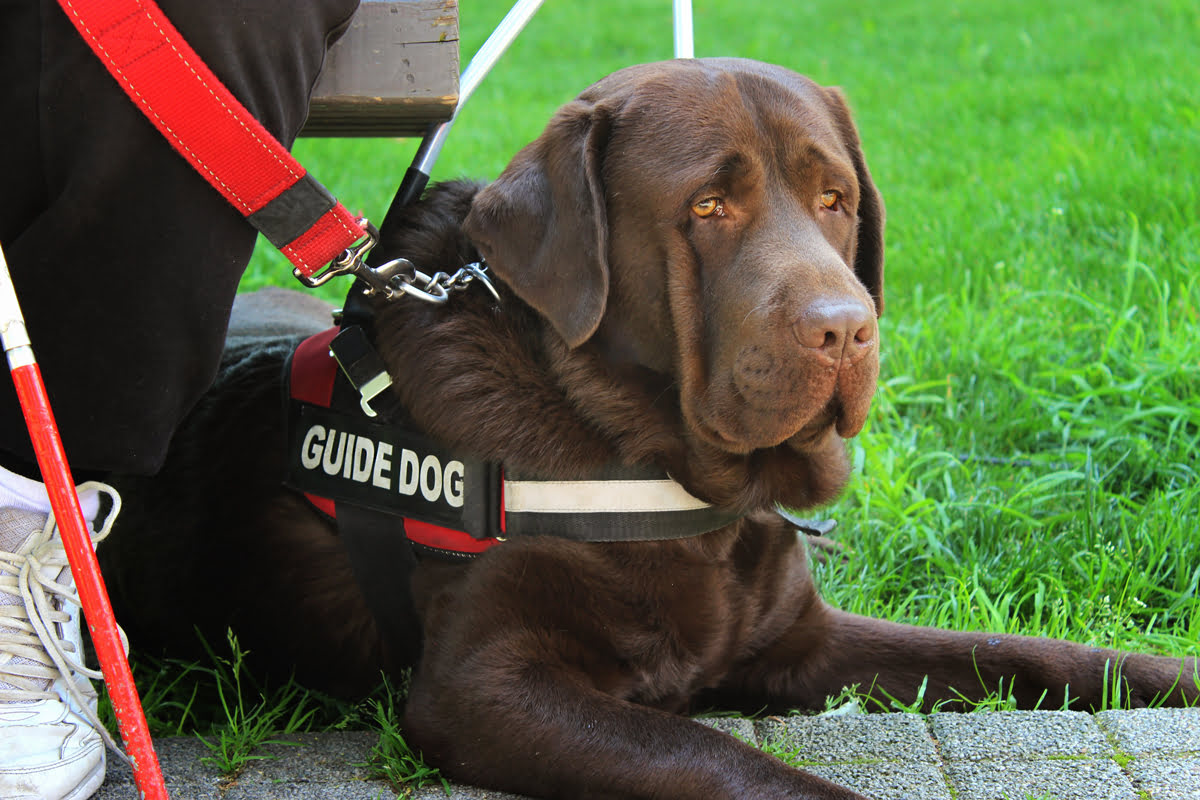Home>Health & Wellness>Common Health Issues>Muscular and Joint Health>How Dogs Get Arthritis


Muscular and Joint Health
How Dogs Get Arthritis
Modified: March 1, 2024
Learn how dogs develop arthritis and how to support their muscular and joint health. Discover tips for managing arthritis in dogs.
(Many of the links in this article redirect to a specific reviewed product. Your purchase of these products through affiliate links helps to generate commission for Pawsomeoldies.com, at no extra cost. Learn more)
Table of Contents
Introduction
Arthritis is a common health issue that affects not only humans but also our beloved canine companions. Just like humans, dogs can experience discomfort and reduced mobility due to arthritis, a condition that causes inflammation and stiffness in the joints. As responsible pet owners, it's essential to understand the causes, symptoms, and treatment options for arthritis in dogs to ensure their well-being and quality of life.
Arthritis in dogs can be a challenging and distressing condition, impacting their ability to move, play, and enjoy daily activities. As a result, it's crucial for dog owners to recognize the signs of arthritis and seek appropriate care to alleviate their furry friend's discomfort.
In this comprehensive guide, we will delve into the intricacies of arthritis in dogs, shedding light on its causes, symptoms, diagnosis, and treatment options. By gaining a deeper understanding of this condition, you can provide the best possible care for your canine companion, ensuring they lead a happy, active, and pain-free life.
Understanding and addressing arthritis in dogs requires a holistic approach that encompasses both medical intervention and lifestyle adjustments. By equipping yourself with the knowledge and resources presented in this guide, you can take proactive steps to manage and prevent arthritis in your dog, fostering their overall well-being and vitality.
Join us on this enlightening journey as we explore the world of arthritis in dogs, empowering you to become a knowledgeable and compassionate advocate for your furry friend's joint health. Let's embark on this educational expedition to unravel the complexities of arthritis in dogs and discover effective strategies to support their musculoskeletal wellness.
Understanding Arthritis in Dogs
Arthritis, also known as osteoarthritis or degenerative joint disease, is a prevalent condition that affects dogs of all breeds and ages. This debilitating ailment primarily targets the joints, leading to inflammation, pain, and reduced mobility. Understanding the underlying mechanisms of arthritis in dogs is crucial for identifying and addressing this condition effectively.
Arthritis in dogs typically develops as a result of wear and tear on the joints over time. The protective cartilage that cushions the ends of the bones within the joints gradually deteriorates, leading to friction and inflammation. As a consequence, the affected joints become stiff, swollen, and painful, impeding the dog's ability to move comfortably.
The most commonly affected joints in dogs with arthritis include the hips, elbows, knees, and spine. As the condition progresses, the surrounding tissues and ligaments may also become inflamed, exacerbating the discomfort experienced by the dog. Furthermore, arthritis can lead to muscle atrophy and a reduced range of motion, significantly impacting the dog's overall quality of life.
It's important to recognize that arthritis in dogs is not solely a condition associated with old age. While senior dogs are more susceptible to developing arthritis due to the natural aging process, younger dogs can also be affected by this ailment, especially if they have experienced joint injuries or have genetic predispositions to joint issues.
The onset of arthritis in dogs can be insidious, with subtle signs that may initially go unnoticed. However, as the condition progresses, the symptoms become more apparent, manifesting as lameness, reluctance to engage in physical activities, stiffness, and difficulty rising from a lying position. Additionally, dogs with arthritis may exhibit behavioral changes, such as irritability or reluctance to be touched in specific areas.
By gaining a comprehensive understanding of arthritis in dogs, pet owners can proactively monitor their furry companions for any signs of joint discomfort and seek timely intervention. With this knowledge, you can embark on a journey to explore the causes, symptoms, diagnosis, and treatment options for arthritis in dogs, empowering you to provide the best care for your canine friend's musculoskeletal health.
Causes of Arthritis in Dogs
Arthritis in dogs can stem from a variety of factors, each contributing to the degeneration of joint health and functionality. Understanding the underlying causes of arthritis is pivotal in implementing preventive measures and tailored treatment strategies for affected dogs.
-
Age and Wear and Tear: As dogs age, the natural wear and tear on their joints can lead to the breakdown of protective cartilage, resulting in arthritis. Over time, the constant use of joints can cause the cartilage to deteriorate, leading to inflammation and stiffness.
-
Genetic Predisposition: Certain dog breeds are genetically predisposed to joint issues and arthritis. Breeds such as Labrador Retrievers, German Shepherds, and Golden Retrievers are more susceptible to developing arthritis due to their genetic makeup.
-
Joint Trauma and Injuries: Dogs that have experienced joint trauma or injuries, such as fractures or ligament tears, are at an increased risk of developing arthritis. These injuries can disrupt the normal functioning of the joints, leading to long-term joint degeneration.
-
Obesity: Excess weight places undue stress on a dog's joints, particularly weight-bearing joints such as the hips and knees. Over time, this can contribute to the development of arthritis as the joints struggle to support the additional weight, leading to accelerated wear and tear.
-
Infections and Diseases: Certain infections and diseases, such as Lyme disease and immune-mediated joint diseases, can trigger inflammatory processes within the joints, leading to arthritis. These conditions can compromise joint health and contribute to the onset of arthritis in affected dogs.
-
Nutritional Imbalance: Inadequate nutrition or an imbalance in essential nutrients can impact joint health in dogs. A lack of key nutrients, such as omega-3 fatty acids and glucosamine, which support joint function and repair, can predispose dogs to arthritis.
-
Environmental Factors: Environmental factors, such as cold and damp conditions, can exacerbate joint discomfort in dogs with arthritis. These conditions can contribute to increased joint stiffness and discomfort, particularly in older dogs.
By recognizing these diverse causes of arthritis in dogs, pet owners can take proactive steps to mitigate risk factors and promote joint health in their furry companions. Through targeted interventions and lifestyle adjustments, the impact of these causes can be minimized, fostering improved joint function and overall well-being for dogs susceptible to arthritis.
Symptoms of Arthritis in Dogs
Recognizing the symptoms of arthritis in dogs is crucial for early intervention and effective management of this debilitating condition. While dogs are adept at masking signs of discomfort, attentive pet owners can identify subtle changes in their pet's behavior and mobility that may indicate the presence of arthritis.
-
Lameness and Altered Gait: Dogs with arthritis may exhibit lameness or an altered gait, favoring one limb over another. This asymmetrical movement is often indicative of joint pain and discomfort, prompting a noticeable change in the dog's walking pattern.
-
Stiffness and Reduced Mobility: Arthritic dogs may experience stiffness, particularly after periods of rest or inactivity. They may struggle to rise from a lying position and exhibit reluctance to engage in physical activities that were once routine. Reduced mobility, especially when navigating stairs or jumping, can also be a telling sign of joint discomfort.
-
Joint Sensitivity and Pain: Dogs with arthritis may display signs of joint sensitivity and pain when specific areas are touched or manipulated. They may vocalize or exhibit signs of discomfort when pressure is applied to the affected joints, indicating heightened sensitivity and pain.
-
Muscle Atrophy and Lethargy: Arthritis can lead to muscle atrophy in the affected limbs due to reduced use and mobility. Additionally, arthritic dogs may demonstrate lethargy and a reluctance to participate in activities they once enjoyed, reflecting the impact of joint pain on their overall energy levels and enthusiasm.
-
Behavioral Changes: Changes in behavior, such as increased irritability, restlessness, or a preference for solitude, can be indicative of underlying discomfort associated with arthritis. Dogs may seek isolation or exhibit signs of agitation due to the persistent discomfort caused by inflamed joints.
-
Difficulty Rising and Lying Down: Arthritic dogs may struggle to rise from a lying position, often displaying hesitancy and discomfort during this movement. Similarly, they may experience difficulty lying down, as the act of lowering themselves can exacerbate joint pain and stiffness.
-
Licking or Chewing at Joints: Dogs may instinctively lick or chew at the affected joints in an attempt to alleviate discomfort. This behavior can serve as a visible indicator of localized pain and inflammation within the joints.
By remaining vigilant and attuned to these symptoms, pet owners can promptly seek veterinary care and implement tailored strategies to alleviate their dog's discomfort and enhance their quality of life. Early recognition of these signs enables proactive intervention, ensuring that arthritic dogs receive the support and treatment necessary to mitigate the impact of this condition on their overall well-being.
Diagnosing Arthritis in Dogs
Diagnosing arthritis in dogs requires a comprehensive approach that encompasses clinical evaluation, diagnostic imaging, and laboratory tests to accurately assess the extent of joint inflammation and degeneration. Veterinarians employ a combination of physical examinations and diagnostic procedures to confirm the presence of arthritis and formulate an effective treatment plan tailored to the individual needs of the affected dog.
During the initial assessment, the veterinarian conducts a thorough physical examination, paying close attention to the dog's gait, joint mobility, and areas of discomfort. Palpation of the joints allows the veterinarian to identify signs of swelling, warmth, and pain, providing valuable insights into the presence and severity of arthritis. Additionally, the range of motion in the affected joints is evaluated to gauge the extent of mobility impairment and joint stiffness.
Diagnostic imaging plays a pivotal role in confirming the diagnosis of arthritis in dogs. X-rays, or radiographs, are commonly utilized to visualize the internal structures of the joints, revealing any abnormalities in bone density, joint alignment, and the presence of osteophytes (bone spurs) indicative of degenerative joint disease. These images provide a detailed assessment of joint integrity and aid in determining the extent of joint degeneration and inflammation.
In some cases, advanced imaging modalities such as magnetic resonance imaging (MRI) or computed tomography (CT) scans may be recommended to obtain a more comprehensive evaluation of the affected joints, particularly in complex or severe cases of arthritis. These imaging techniques offer detailed cross-sectional views of the joints, facilitating a precise assessment of soft tissue structures and cartilage integrity.
Laboratory tests, including blood work and joint fluid analysis, may be conducted to rule out underlying infections, inflammatory conditions, or autoimmune diseases that could contribute to joint inflammation. Analysis of joint fluid obtained through aspiration provides valuable information about the presence of inflammatory markers and the overall health of the joint structures, aiding in the confirmation of arthritis and the identification of potential contributing factors.
By integrating these diagnostic approaches, veterinarians can establish a definitive diagnosis of arthritis in dogs, enabling them to devise a tailored treatment plan that addresses the specific needs and challenges presented by the affected dog. This comprehensive diagnostic process empowers pet owners and veterinarians to collaboratively navigate the complexities of arthritis, ensuring that dogs receive the appropriate care and support to manage this condition effectively.
Read more: How Do Dogs Get Septic Arthritis
Treatment Options for Arthritis in Dogs
The treatment of arthritis in dogs aims to alleviate pain, reduce inflammation, improve joint mobility, and enhance the overall quality of life for affected pets. A multifaceted approach that combines medical interventions, lifestyle modifications, and supportive care is essential in managing this chronic condition effectively.
Medications
Veterinarians may prescribe nonsteroidal anti-inflammatory drugs (NSAIDs) to mitigate pain and inflammation in arthritic dogs. These medications help alleviate discomfort and improve joint function by targeting the inflammatory processes within the affected joints. Additionally, disease-modifying osteoarthritis drugs (DMOADs) may be recommended to slow the progression of joint degeneration and promote cartilage repair, offering long-term benefits for dogs with arthritis.
Nutritional Supplements
Supplements such as glucosamine, chondroitin, and omega-3 fatty acids play a pivotal role in supporting joint health and reducing the symptoms of arthritis in dogs. These nutritional supplements aid in maintaining cartilage integrity, reducing inflammation, and promoting joint lubrication, contributing to enhanced mobility and reduced discomfort for arthritic dogs.
Physical Therapy and Exercise
Physical therapy techniques, including therapeutic exercises, hydrotherapy, and massage, can help improve joint flexibility, muscle strength, and overall mobility in arthritic dogs. Low-impact exercises tailored to the individual dog's needs can alleviate stiffness, prevent muscle atrophy, and enhance joint function, fostering a more active and comfortable lifestyle for affected pets.
Read more: How Much Is Cortisone For Dog Arthritis
Weight Management
Maintaining a healthy body weight is crucial for dogs with arthritis, as excess weight places additional strain on the joints, exacerbating discomfort and hindering mobility. A balanced diet and portion control, coupled with regular exercise, can aid in weight management and reduce the burden on arthritic joints, promoting improved mobility and overall well-being.
Environmental Modifications
Creating a supportive environment for arthritic dogs involves implementing modifications such as orthopedic bedding, ramps or steps for easier access to elevated surfaces, and slip-resistant flooring to minimize the risk of falls and joint strain. These adjustments enhance the comfort and safety of arthritic dogs, facilitating easier movement and reducing joint stress.
Surgical Interventions
In advanced cases of arthritis or when conservative measures are insufficient, surgical interventions such as joint debridement, arthroscopy, or joint replacement may be considered to alleviate pain and restore joint function. These procedures aim to address severe joint damage and provide long-term relief for dogs with debilitating arthritis.
By integrating these treatment options and tailoring them to the specific needs of each arthritic dog, pet owners can effectively manage this condition and optimize their furry companions' musculoskeletal health. Collaborating closely with veterinarians and implementing a holistic approach to care empowers pet owners to support their dogs in leading fulfilling and comfortable lives despite the challenges posed by arthritis.
Preventing Arthritis in Dogs
Preventing arthritis in dogs encompasses proactive measures aimed at preserving joint health, minimizing risk factors, and promoting overall musculoskeletal well-being. By implementing preventive strategies, pet owners can play a pivotal role in safeguarding their canine companions from the debilitating effects of arthritis, fostering a lifetime of mobility and comfort.
Read more: What Age Do Dogs Get Arthritis
Balanced Nutrition
A foundational element in preventing arthritis in dogs is providing a balanced and nutrient-rich diet that supports joint health. Diets rich in omega-3 fatty acids, glucosamine, and chondroitin sulfate can aid in maintaining cartilage integrity and reducing inflammation within the joints. Additionally, ensuring appropriate portion control and weight management is crucial in preventing excess strain on the joints, particularly in predisposed breeds or overweight dogs.
Regular Exercise
Engaging dogs in regular, low-impact exercise routines tailored to their age, breed, and physical condition is essential for promoting joint flexibility, muscle strength, and overall mobility. Controlled activities such as walking, swimming, and gentle play not only support joint health but also contribute to weight management and overall physical fitness, reducing the risk of arthritis development.
Joint Supplements
Incorporating joint supplements, such as glucosamine and chondroitin, into the daily regimen of dogs, especially those with a genetic predisposition to joint issues, can aid in maintaining joint integrity and reducing the risk of arthritis. These supplements provide essential building blocks for cartilage and support joint lubrication, mitigating the impact of wear and tear on the joints.
Preventative Veterinary Care
Regular veterinary check-ups and preventive care play a crucial role in identifying early signs of joint issues and implementing proactive interventions. Veterinarians can provide tailored recommendations for joint health, assess the dog's musculoskeletal condition, and offer guidance on preventive measures to minimize the risk of arthritis development.
Read more: How Much Is Cortisone For Dog Arthritis
Weight Management
Maintaining an optimal body weight through a balanced diet and regular exercise is fundamental in preventing arthritis in dogs. Excess weight places undue stress on the joints, accelerating wear and tear and increasing the likelihood of developing arthritis. By managing weight effectively, pet owners can significantly reduce the risk of joint issues in their canine companions.
Environmental Modifications
Creating an environment that supports joint health and minimizes joint strain is essential in preventing arthritis in dogs. Providing orthopedic bedding, minimizing slippery surfaces, and offering easy access to elevated areas through ramps or steps can reduce the risk of joint injuries and promote joint comfort, particularly in senior or predisposed dogs.
By integrating these preventive measures into the daily care and lifestyle of dogs, pet owners can proactively safeguard their furry companions from the onset of arthritis, ensuring that they lead active, comfortable, and pain-free lives. Through a holistic approach to preventive care, pet owners can make a profound impact on their dog's musculoskeletal health, fostering a lifetime of vitality and mobility.
Conclusion
In conclusion, the journey through the intricacies of arthritis in dogs has provided valuable insights into the multifaceted nature of this condition and the diverse strategies available to support the musculoskeletal health of our beloved canine companions. Arthritis, a prevalent ailment that affects dogs of all breeds and ages, presents unique challenges that necessitate a comprehensive understanding and proactive intervention to ensure the well-being and comfort of affected pets.
By delving into the causes, symptoms, diagnosis, treatment options, and preventive measures for arthritis in dogs, pet owners are empowered to navigate this complex landscape with knowledge and compassion. The recognition of arthritis as a condition that transcends age and breed predispositions underscores the importance of vigilance and proactive care in safeguarding the joint health of dogs throughout their lives.
The diverse causes of arthritis, ranging from age-related wear and tear to genetic predispositions and environmental factors, highlight the need for tailored preventive measures and targeted interventions to mitigate risk factors and promote joint health. The subtle yet telling symptoms of arthritis, including lameness, stiffness, and behavioral changes, serve as crucial indicators for early intervention and the implementation of supportive care to alleviate discomfort and enhance mobility.
The comprehensive diagnostic approach employed by veterinarians, encompassing physical examinations, diagnostic imaging, and laboratory tests, enables the accurate assessment and confirmation of arthritis in dogs, laying the foundation for tailored treatment plans that address the specific needs of affected pets. The integration of medical interventions, nutritional supplements, physical therapy, and lifestyle modifications forms a holistic framework for managing arthritis in dogs, fostering improved joint function and overall well-being.
Furthermore, the proactive measures aimed at preventing arthritis in dogs, such as balanced nutrition, regular exercise, joint supplements, and weight management, underscore the pivotal role of pet owners in preserving the joint health of their furry companions. By embracing these preventive strategies, pet owners can significantly reduce the risk of arthritis development and promote a lifetime of mobility and vitality for their dogs.
In essence, the journey through the complexities of arthritis in dogs culminates in a profound understanding of the condition and the diverse avenues available for proactive care and support. By leveraging this knowledge and implementing tailored strategies, pet owners can become steadfast advocates for their canine companions' musculoskeletal wellness, ensuring that they lead fulfilling, active, and pain-free lives despite the challenges posed by arthritis.











